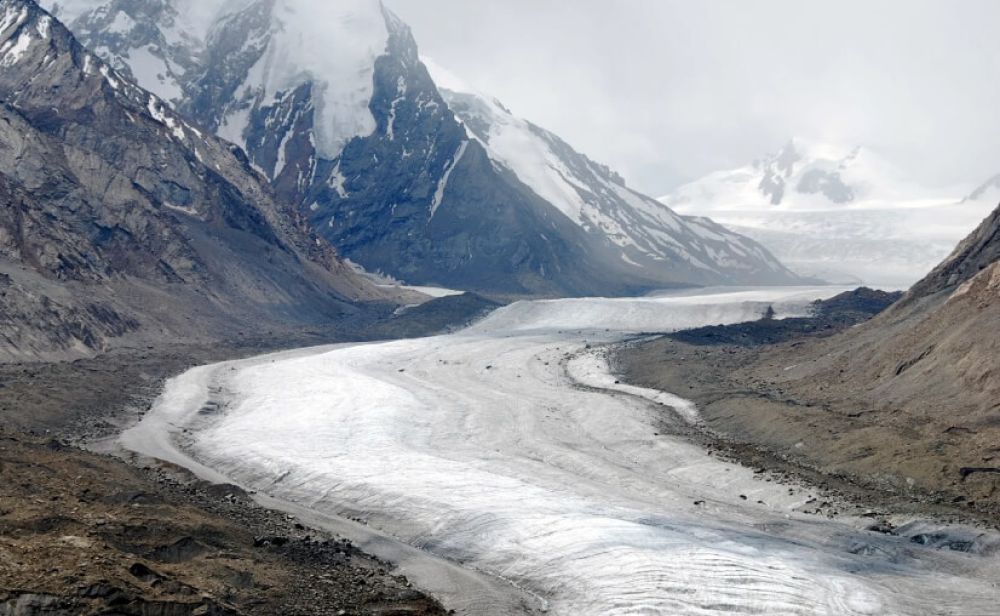Drang-Drung Glacier, located in the remote Zanskar region of Ladakh, India, is one of the largest glaciers in the Indian subcontinent. This destination, often referred to as a trekker's paradise, has been gaining popularity among adventure tourists and nature enthusiasts.
Tourism History
The history of tourism in the region can be traced back to several decades ago when only a few intrepid travelers and mountaineers ventured into this inhospitable terrain. Initially, the Zanskar region was accessible only through treacherous trails, and Drang-Drung Glacier remained largely unknown to the outside world.
In the 1970s and 1980s, with the growth of adventure tourism globally, explorers started to chart the Himalayas, including the Zanskar range. Access to the region improved somewhat as India sought to encourage tourism as part of its economic development plan. However, due to the region's isolation and the challenging conditions, only a small number of adventure tourists visited the glacier each year.
Bold interest in the unique landscapes and cultural heritage of the Himalayas saw a gradual increase in tourists during the 1990s. Infrastructure such as roads, accommodation, and guided tours improved, making it more accessible for visitors.
During the 2000s, with the worldwide boom in adventure travel, Ladakh, as a whole, including the Zanskar region, began to see a significant jump in tourist numbers. Today, Drang-Drung Glacier is an important point of interest for trekkers who undertake the strenuous but breathtakingly beautiful journey through Zanskar.
Latest Tourism Trends
As the world becomes more connected and interest in off-the-beaten-path destinations grows, destinations like Drang-Drung Glacier have enjoyed increased popularity. Recent tourism trends include:
1. Sustainable Tourism: There is a growing awareness among visitors about the importance of preserving the natural beauty of Drang-Drung Glacier. Efforts are being made to promote eco-friendly practices and responsible tourism.
2. Experience and Adventure Tourism: Tourists are seeking unique experiences that combine adventure with cultural immersion. Trekking to Drang-Drung Glacier often includes visits to ancient monasteries and interaction with the local communities.
3. Photography Tours: The stunning landscape of Drang-Drung Glacier is a magnet for photography enthusiasts. Tour operators have started offering specialized photography tours to capture the majestic scenery.
4. Wellness Tourism: The untouched nature and peaceful environment of the Zanskar region attract visitors looking for a break from the stress of modern life, fostering interest in wellness retreats that offer yoga and meditation in view of the glacier.
5. Improved Accessibility: Although still challenging to reach, improved infrastructure such as better roads and the option of helicopter tours have made it easier for a broader audience to visit the glacier.
Despite the growth in tourism, Drang-Drung Glacier remains a remote and pristine destination. Authorities and tour operators work together to ensure that the influx of tourists does not damage the fragile ecosystem or undermine the traditional way of life in Zanskar. The tourism sector in Ladakh is committed to offering visitors an authentic and sustainable experience, preserving this magnificent glacier for future generations.

